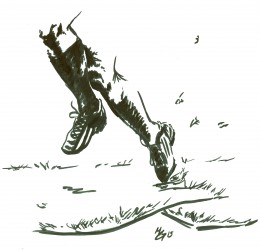
The intramural program is immensely popular, with over 8,000 students participating throughout the year. With that widespread support, it inevitably puts a damper on students’ days when their game is cancelled due to “poor field conditions.”
Fortunately, Binghamton University is constructing a new, cost-effective and environmentally conscious 130,000-square-foot turf field to provide students with a new and improved place to kick, throw and hit balls in a variety of different sports.
The new turf field will allow students to play year-round. In a climate as gloomy and unpredictable as Vestal, New York’s, a field more resistant to inclement weather conditions is a necessity. Dedicated athletes will no longer be held up by rain, snow or maelstroms (and maybe squalls), and the more fair-weathered players might be more willing to go to practice and stay active if their cleats aren’t sinking into the ground with every step.
Unlike many campus recreation programs, access to this new field is free. Even if the gym is crowded or students don’t feel like doling out money to stand in line for an hour to pretend they know what they’re doing with weights, everyone will be able to enjoy this facility. At a large university like Binghamton, which has limited acreage for expansion, new construction projects can be difficult to plan. More students enroll in the University every year and servicing their diverse set of needs is a challenge. Construction won’t impose costs upon students who are more interested in tearing up textbooks than turf.
The initial construction cost is $2.5 million, but decreased maintenance costs make the turf field more economical over time. Because the turf is made of recycled tires and doesn’t require chemical upkeep or mowing, the project is also more environmentally friendly. There will, however, be more energy used to light the field so that students may play at nighttime, but that’s a cost that effects a considerable benefit.
Probably the most detrimental aspect of this whole project is that those black bits of turf get everywhere. You’ll start seeing them in the dining halls, in the lecture halls, in your sheets, in your shower. Or maybe not. But they’ll get places.
We know it is hard to conceptualize this new project right now, because if you stay outside for longer than 15 minutes, you’ll probably need to amputate your toes. Construction is scheduled to be completed in fall 2015, so there will be something to look forward to next year. In the meantime, you can still wade through inches of snow on the muddy grass field and wait until you face-plant while running around in the mud, in case spring ever returns and Binghamton ever thaws.


